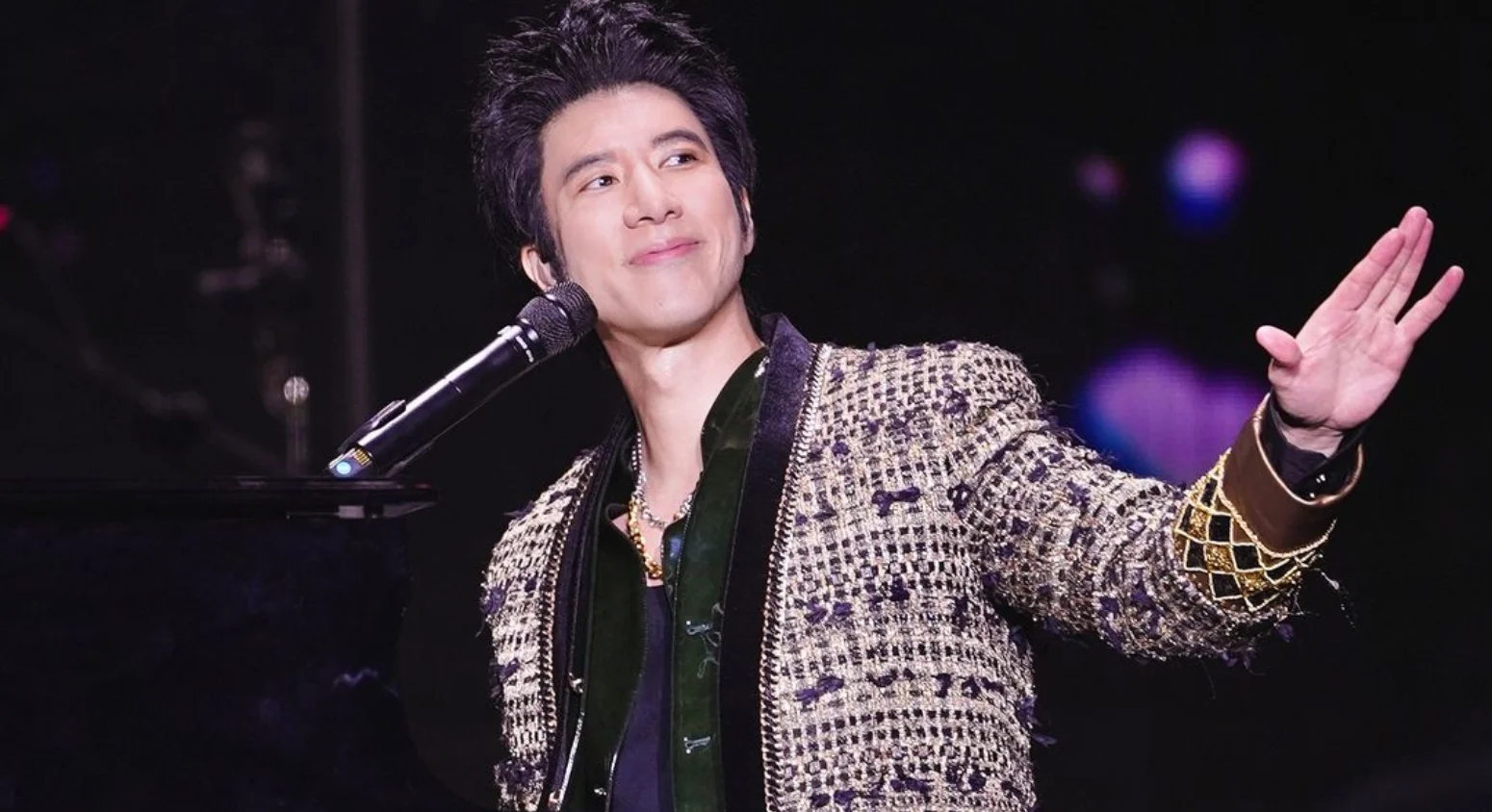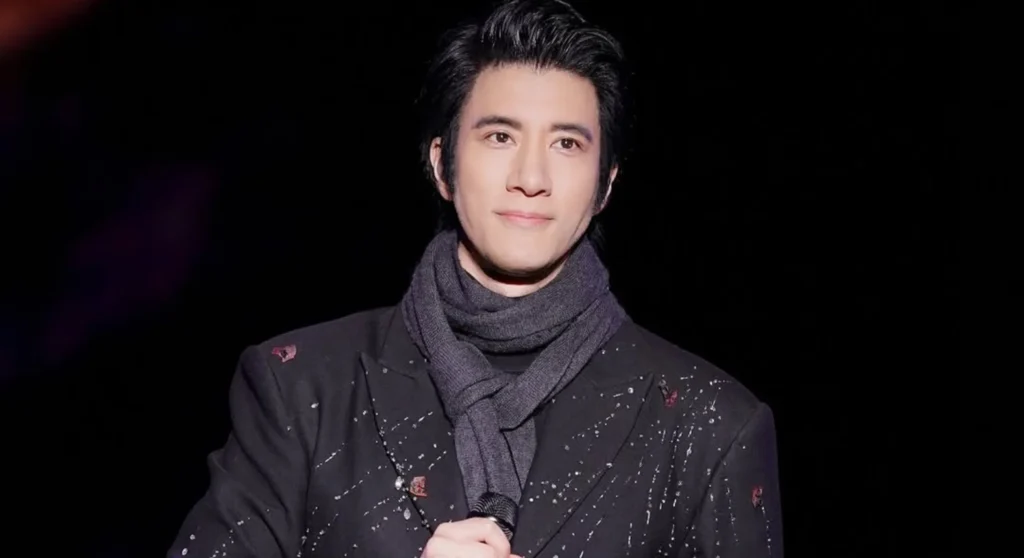Have you ever heard music that feels both old and new at the same time? That’s what makes Wang Leehom’s songs stand out.
He grew up in the United States but has Chinese roots. In his music, he brings these two worlds together. He mixes traditional Chinese sounds with modern music styles like pop, hip-hop, and R&B. This mix creates something fresh and different—something that speaks to people from many cultures.
Wang Leehom’s songs are more than just music. They tell a story about who he is and where he comes from. They show how someone can honor their culture while also creating something new.
In this blog, we’ll look at how his life shaped his music, how he combines different styles, and how his songs have made a big impact. Whether you already know his music or are hearing about him for the first time, there’s a lot to discover.
Table of Contents
Wang Leehom’s Cross-Cultural Roots
What happens when you grow up with one foot in two very different worlds? For Wang Leehom A.K.A King of Chinese Pop, that question isn’t just personal—it’s the heart of his music.
Born in Rochester, New York, to Taiwanese parents, Leehom grew up in a home filled with both Chinese traditions and American culture. From speaking Mandarin at home to playing classical violin in school, he was constantly moving between two identities. And instead of choosing just one, he decided to embrace both.
A Childhood Filled with Music
Even as a child, music was everywhere. Leehom learned:
- Violin and piano from a young age, showing early classical talent
- Jazz and pop music through school and community performances
- Mandarin songs and Chinese opera during family gatherings
This mix of influences helped shape his unique sound later in life. He didn’t just enjoy different kinds of music—he lived them.
From Ivy League to Idol
After high school, Leehom attended Williams College, majoring in music and Asian studies. He later studied at the Berklee College of Music, where he deepened his knowledge of songwriting, production, and performance. But what really set him apart wasn’t just education—it was vision.
He wasn’t trying to copy Western artists or repeat what was already popular in Asia. He wanted to create something new—music that reflected his Chinese-American identity and spoke to people who felt caught between cultures.
Why His Roots Matter
Understanding Leehom’s background helps us understand his music:
- He knows what it’s like to feel “in-between,” and he turns that into strength.
- His songs often include both English and Mandarin, making them feel familiar to fans around the world.
- He draws from both Eastern and Western traditions, showing respect for where he comes from while pushing the boundaries of pop music.
In many ways, Wang Leehom isn’t just a Chinese-American artist. He’s a bridge—connecting cultures, styles, and generations through sound. And it all started with the life he lived between two worlds.
Elements of Cultural Fusion in His Music
What does it sound like when two very different cultures come together in one song? If you’ve listened to Wang Leehom, you already know. His music is where East meets West, blending Chinese traditions with modern Western styles to create something fresh and powerful.
Let’s look at how he makes this mix work so well.
1. Old Instruments, New Sound
One thing that makes Wang Leehom’s music style special is how he uses traditional Chinese instruments in modern songs. Instead of only using guitars and keyboards, he adds instruments like:
- Erhu – a two-stringed instrument that sounds a bit like a violin
- Pipa – a four-stringed lute with a bright, quick sound
- Dizi – a bamboo flute that adds soft, flowing notes
These old instruments give his music a unique feel. They remind listeners of Chinese history and culture, even when the beat sounds modern.
2. Blending Different Music Styles
Leehom doesn’t stick to one genre. He takes parts of many styles and mixes them together, such as:
- Hip-hop with Mandarin lyrics
- Pop and R&B with Chinese instruments
- Rock and electronic sounds with folk music
This kind of mixing is what makes his songs stand out in Mandopop. He’s not just making catchy tunes—he’s changing the way people think about pop music in Asia.
3. Singing in Two Languages
Many of Leehom’s songs include both English and Mandarin. Sometimes, he switches between the two in the same song. This makes his music easy to enjoy for fans in many countries.
It also reflects who he is—a person who grew up with both American and Chinese cultures. His songs often talk about identity, family, and love in ways that feel real and personal.
4. A New Kind of Music: “Chinked-out”
Leehom even created his own name for his style—“Chinked-out.” It’s a mix of Chinese folk music and modern sounds like hip-hop. The name may sound bold, but he uses it to take back a hurtful word and turn it into something strong and creative.
With this style, he:
- Shares music from Chinese minority groups
- Breaks old ideas about what Asian pop should sound like
- Shows pride in his background in a fun, powerful way
In every song, Wang Leehom brings different worlds together—old and new, East and West. His music is more than just sound. It’s a way of sharing stories, feelings, and culture with people everywhere.
Signature Albums and Songs That Embody Fusion
If you’re wondering where to start with Wang Leehom’s music, his albums are the perfect place. They don’t just show off his talent—they tell the story of how he blends cultures, sounds, and ideas into something truly unique. Let’s explore some of the key albums and tracks that define his style of cultural fusion.
1. Heroes of Earth (2005): Honoring Chinese Culture with a Modern Twist
This album is often seen as one of Wang Leehom’s most iconic. It’s bold, creative, and full of energy. Here, he mixes traditional Chinese sounds with hip-hop and R&B. It’s also where he introduced many people to his “Chinked-out” music style.
Standout tracks include:
- “Heroes of Earth” – A tribute to ancient Chinese heroes with modern beats
- “Kiss Goodbye” – A powerful ballad that became a massive Mandopop hit
- “Gai Bian Zi Ji” (Change Me) – A motivating song about self-growth with a rich, layered sound
This album shows how Chinese stories and Western music can work together beautifully.
2. Shangri-La (2004): Exploring China’s Ethnic Sounds
Leehom took a unique journey for this album—literally. He traveled across rural China to learn about the music of ethnic minority groups. Then, he combined those sounds with pop, R&B, and electronic music to create something fresh.
Highlights from this album:
- “Shangri-La” – Named after a mythical paradise, this song blends Tibetan-inspired melodies with strong beats
- “Heartbeat” – Combines love lyrics with powerful rhythm and a mix of East-West instruments
- “Mistake” – A softer track that shows his vocal range and emotional style
The songs from Shangri-La are perfect examples of Chinese pop music that honors tradition while sounding completely new.
3. Songs That Define His Fusion Style
If you’re short on time but want a quick taste of Wang Leehom’s fusion sound, start with these must-listen songs:
- “Descendants of the Dragon” – A powerful anthem of Chinese pride, originally written in the 1970s but reimagined by Leehom with rap and rock
- “Julia” – A catchy love song with bilingual lyrics and smooth R&B tones
- “The One and Only” – A ballad that mixes Western melody with Chinese poetic themes
Each track brings something different—but all carry his signature mix of cultures.
Whether you’re a long-time fan or discovering his work for the first time, these Wang Leehom albums and songs show just how rich and meaningful cultural fusion can be. They aren’t just catchy—they tell stories that cross borders and bring people together through music.
Next up: let’s look at how his influence has shaped the music world beyond just the charts.
The Impact of Wang Leehom’s Cultural Fusion on the Music Industry
Have you ever thought about how one artist can change the way people see and hear music? Wang Leehom’s influence goes far beyond catchy songs or chart-topping albums. He helped shape a new direction in the Asian music industry, opening doors for a more global sound and helping others feel proud of who they are.
Let’s break down how his unique style has made a lasting impact.
1. Redefining What Mandopop Can Be
Before Leehom, Mandopop mostly followed familiar pop patterns—simple ballads, love songs, and a few dance tracks. But when he began blending Chinese instruments with R&B, hip-hop, and rock, things started to shift.
His music showed that:
- Traditional sounds can feel modern and fresh
- Personal identity can become part of pop culture
- Fusion music can still be fun and widely popular
Because of this, many newer artists now experiment with mixing styles, just like he did.
2. Inspiring a New Generation of Artists
Leehom didn’t just create hits—he created space. As a Chinese-American artist, he showed others that your background can be your strength. You don’t have to choose between your roots and your future.
Artists who’ve followed in his footsteps now:
- Use both local and global music styles
- Feel more confident writing in multiple languages
- Include cultural themes in their songs
His success helped prove that cross-cultural music isn’t just possible—it’s powerful.
3. Making Asian Music More Global
In the past, Asian music didn’t always get much attention in the West. But artists like Wang Leehom helped change that. His music reached fans in China, Taiwan, the U.S., and beyond. He also performed at global events, worked with international musicians, and brought new eyes to Mandopop.
This helped:
- Grow international interest in Chinese-language music
- Build bridges between East and West music markets
- Show the world that great music speaks every language
4. Leading with Purpose, Not Just Popularity
What makes Wang Leehom’s influence truly special is his message. He’s always pushed for music that means something—whether it’s celebrating Chinese heritage, encouraging self-growth, or connecting people through shared emotion.
He’s not just a performer. He’s a storyteller, a cultural bridge, and a role model for anyone navigating life between two worlds.
In the end, Leehom didn’t just change sounds—he changed mindsets. He proved that music could be a space where different cultures meet, blend, and shine together. And that influence continues to shape the future of Asian pop music today.
Conclusion: More Than Just Music
Wang Leehom has done more than make hit songs. He’s created a space where different cultures come together—and that’s something truly special.
As an Asian-American artist, Leehom didn’t choose between East and West. Instead, he brought them together through music. He mixed traditional Chinese sounds with hip-hop, R&B, and pop. And in doing so, he showed that being proud of your roots can be your biggest strength.
His songs remind us that:
- Music can tell powerful stories
- Culture can be something we celebrate, not hide
- Being different is a gift, not a problem
Thanks to Leehom, Mandopop is more creative and global than ever. He helped other artists see that it’s okay to try something new, to be bold, and to share their own stories through sound.
When you listen to his music, you’re hearing more than beats and lyrics. You’re hearing a voice that brings people together. You’re hearing someone who made space for others to feel seen and heard.
That’s the heart of Wang Leehom’s legacy—and it’s one that continues to inspire today.
So the next time you hear one of his songs, ask yourself:
What parts of your own story can you hear in his music?
Because great music doesn’t just entertain us.
It connects us.




